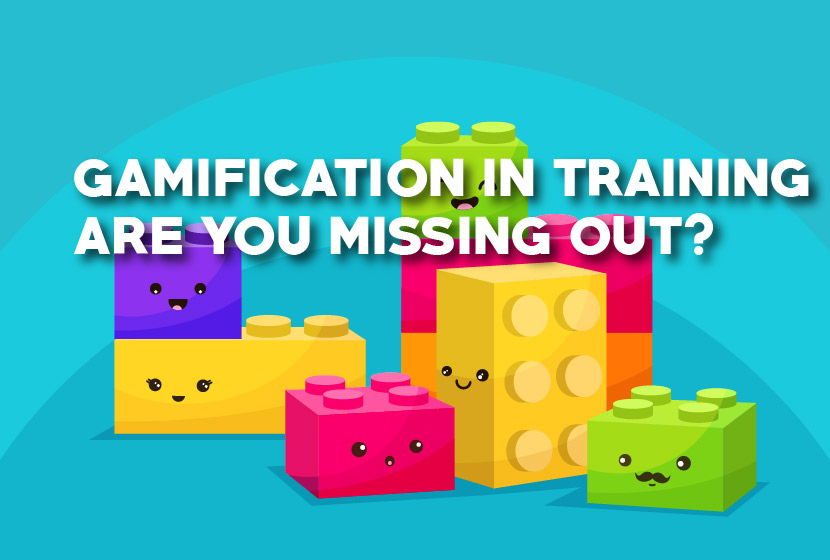One of the latest trends in learning and development for organizations has been the progression from E-Learning and classroom training modules to Gamification in training.
Do you want to know how Gamified learning is changing the training and development industry? Is it really for you?

We try to answer all your questions in this series dedicated to Gamification in Training.
What is Gamification in training?
The definition of Gamification is the application of game-like mechanics to non-game entities to encourage a specific behavior
Features of game mechanics are points scored, levels, achievements, leaderboards, quick feedback loop, and time limits.
Essentially, these components are what actually make what we call a ‘Game’. And if executed well they make it enjoyable to play the game. The learning is continuously being transferred and people are building knowledge and skills while having fun during the entire process.
The goal is to maximize enjoyment and engagement by capturing the interest of learners and inspiring them to continue learning.
Our present innovation empowers instructors to execute game dynamics in their work. For instance, making a history fight between understudies or a preparation test for experts.
If you wish to implement Gamified learning into your E-Learning see: How to implement Gamification in E- Learning.
What makes Gamified learning effective
If you ask a child, “What is work?” They most likely will say, “School and homework!!” Try asking them, “What is play?” Many of them will say, “Mobile games, video games”
Choice of independent decision
It’s the feeling of making an independent decision that makes the learning effective. The learner does not feel that someone is teaching.
They are a part of the entire process and make their own independent decisions. The autonomy and the ability of their independent decision give them a feeling of being a part of the process
For instance, notwithstanding a course that is obligatory, in the event that you execute game mechanics accurately, you can in any case make a feeling of being self-driven.
One great approach to do this is utilizing ‘surprise rewards’ as a component (for instance give a reward to individuals attending 5 sessions successfully).

A surprise reward or achievement badge can make an exceptional individual connect with an action, in the wake of getting the honor individuals will feel that they go to the session as opposed to being compelled to.
A man begins feeling that they really earned the reward just by going to the address, expanding his feeling of autonomy and self-assurance.
Gamification of training and Continuous improvement

We all agree that learning or training is a continuous process, not a magic pill that will make you smarter overnight. The essential element of game mechanics or Gamification in training is continuous improvement.
You don’t move levels in a game till you get some level of experience. This in fact is a key component of continuous improvement.
When you first solve a problem in your job, you feel a sense of accomplishment. Gamification gives you options to capitalize on the individual sense of accomplishment to be transferred to the real work environment or real life.
Purpose: The urge to contribute to something larger than ourselves.

Clearly, people feel the internal urge to contribute to something larger than themselves.
At first glance this fact is quite unnatural if you compare it to video games: as playing a video game for hours does not seem to contribute to something larger than ourselves.
Most games solve this by adding a background story to the game: you either have to save the world or the girl. And we need the player to help out. Remember Super Mario trying to save the princess!
In fact all the games now have a background story these days to drive the same behavior
Stories do make a lot of difference here. And adding a transcendent story to education doesn’t have to be difficult. The story doesn’t even need to have basic elements as characters, a plot, tension, and resolution.
It just needs to relate to your audience and give them a feeling that doing the activity they’re doing (practicing sales pitch, taking foreign language quizzes) contributes to the goal set in the story.
You have to transform and integrate the learning activity into the story. Mario needs to collect 5 stones (math quizzes), and 1 hammer (history essay) before he can create a bridge to enter the castle and save the princess. Ideally, the story unfolds as people progress in their journey to mastering.
Conclusion
By tending to these characteristics of learning, you can enhance the learning experience and absorption and have some good times in the meantime. So why pause? Begin today with Gamification in training and reap the rewards!


